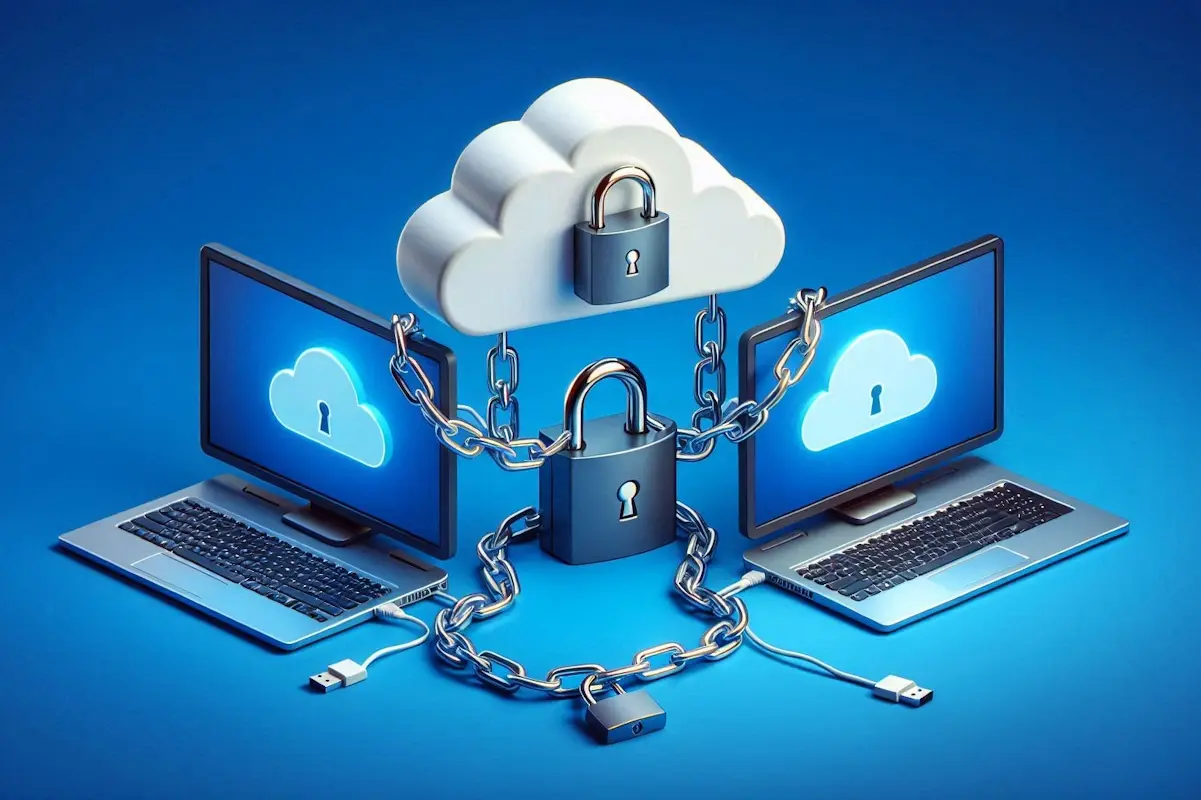Understanding Microsoft Secure Score: A Comprehensive Guide
Discover how Microsoft Secure Score can help you review and improve your organisation's security posture.
Our client portal provides all the tools you need to create, view or update your support requests.
For urgent IT support during business hours, or if you suspect anything suspicious call 01314528444 for the fastest response.
If one of our team has asked you to start a remote control session on your computer, use the remote control menu option above.
3 min read
itfoundations
Originally posted on October 02, 2023
Last updated on August 20, 2024
October is Cybersecurity Awareness Month. It serves as a timely reminder that there are many ways to safeguard data. Following the basics can make a big difference in how secure your business is.
Cybersecurity can seem like a daunting subject for staff, but it’s important to remember that cyber security is not only a job for the IT team. Everyone can play a part in keeping their organisation’s data safe. What they learn at work can also help them keep their personal data safe.
As technology continues to advance, so does the need for heightened awareness. As well as proactive measures to safeguard sensitive information.
Cybersecurity Awareness Month (CAM) is an annual initiative held every October to promote cybersecurity awareness and education. It aims to empower individuals and organisations by giving them knowledge and resources to help strengthen their defences against cyber threats.
CAM started as a U.S. initiative, National Cybersecurity Awareness Month. Then, it quickly spread around the globe. It’s led by two agencies:
This collaborative effort involves various stakeholders. Government agencies, industry leaders, and cybersecurity experts all come together to raise awareness about cyber risks and best practices.
This is CAM’s 20th year. To celebrate, the theme revolves around looking at how far cybersecurity has come. As well as how far it has to go. This year, CAM focuses on four key best practices of cybersecurity.
These are:
They really are the basics, but you’d be amazed at how many organisations still aren’t implementing these simple steps.
Let’s take a closer look at these four best practices of good cyber hygiene.
Central to Cybersecurity Awareness Month is the promotion of essential cyber hygiene practices. We follow good hygiene to maintain physical health. For example, we brush our teeth every day. Cybersecurity also requires ongoing good hygiene practices to secure the online environment. These practices form the foundation of a strong cybersecurity defence.
Implementing Multi-Factor Authentication (MFA) adds a vital layer of security to all logins. In most cases, a hacker can’t breach an account protected by MFA. This is the case even if the cyber crook has the password.
According to Microsoft, MFA can block 99.9% of attempted account compromise attacks. With that strong track record, everyone really should be using it. And using it on every login they have.
If a cloud platform doesn’t offer MFA then you should look for an alternative solution. This simple message is even enshrined in the UK’s own Cyber Essentials accreditation requirements.
Passwords remain a critical aspect of securing online accounts. Despite the increased use of biometrics, passwords still rule. Encourage your team members to use strong, unique passwords for each account. Avoid easily guessable information like birthdays or names.
Companies can help by providing password managers and training staff in their use. That way every service can have its own unique, long, strong password without staff having to remember what they are. They only need to remember one password to access the service. Simple!
Outdated software creates vulnerabilities that cybercriminals can exploit. Regularly update operating systems, applications, and firmware. This ensures the latest security patches are in place.
Automating updates is a good way to ensure they’re done promptly. Companies can use endpoint device managers to handle updates across all employee devices. Managers like Intune simplify the process and enhance endpoint security.
Be sure that any third-party software which is not provided and managed by your IT Partner is being maintained by its supplier. Third-party software can often be overlooked and has been the cause of many a breach. If software isn’t supported by the manufacturer anymore, then it’s time to upgrade.
Phishing attacks are a common vector for cyber threats. Train your team to identify phishing emails, suspicious links, and unsolicited attachments. Encourage them to verify the sender’s email address. As well as never provide sensitive information unless certain of the recipient’s authenticity.
It’s also important to educate employees about phishing beyond email. Phishing via text messages has been increasing significantly. Some criminals phish via direct messages on social media platforms.
Another important aspect of phishing awareness is to report phishing. If it’s reported, then other employees know to avoid that phishing trap. The organisation’s IT team also needs to know so they can take action to mitigate the threat. Be sure to let employees know how they can report a phishing email when they suspect one.
Cybersecurity Awareness Month offers a valuable opportunity to refocus on the significance of cybersecurity. As well as prioritising essential cyber hygiene practices. Building a culture of cybersecurity awareness within your team is important. It can be the difference between vulnerability and resilience.
Need some help ensuring a more secure and resilient future? Our team of experts can get you going on the basics. Once those are in place, your organisation will be more productive and much more secure.
Get in touch to schedule a chat.
Article used with permission from The Technology Press.

Discover how Microsoft Secure Score can help you review and improve your organisation's security posture.

Email has long been the default method of sharing files, but it’s not always the most efficient or secure way. Fortunately, Microsoft Teams offers a...

Cyber Essentials is the official UK cyber security standard, but what is it, and do you need it?